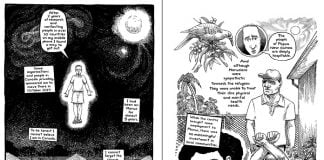A Dangerous Method
Directed by David Cronenberg
Available on DVD soon
Dangerous Method is a provocative film that depicts the intellectual birth, personal dilemmas and much speculated-upon falling out of the founders of psychoanalysis, Sigmund Freud and Carl Jung. Whilst the film focuses on the role of Russian Jewish woman Sabine Speilrein in the Freud-Jung conflict, the debates between Freud and Jung on sexuality, science and human agency are the most gripping aspects of the film.
Sexuality and repression
Set against conservative Victorian sexual morality, Freud’s theories on the unconscious as composed of repressed desire and sexuality were a major step forward. Rather than scorning sexuality as sinful or vulgar, he drew attention to the fact that sexuality is a significant aspect of the human subject.
But Freud arrives at a conservative conclusion—that the repression of sexual desires and inner drives was a necessary act for civilised society to function.
Freud’s argument about the necessity of this is challenged in the film when Jung encounters the erratic psychoanalyst Otto Gross and his libertarian “do not repress anything” philosophy. Jung asks Gross whether he thinks it is, “necessary or desirable to exercise some restraint as a contribution, say to the smooth functioning of civilisation?” Gross answers, “Why? And make myself ill?”
Gross encourages the married Jung to pursue his desire and engage in an affair with Speilrein which marks a turning point in Jung’s development and informs wider questions on the role of psychoanalysis explored at the end of the film.
While Gross’s argument for sexual freedom is radical, sexual liberation in the film is limited to the pursuit of individual desire, rather than a wider critique of the sexually repressive institutions of capitalist societies like the nuclear family and the restrictive ideas about gender and sexuality associated with it.
Science and mysticism
Tensions develop in the movie between Freud and Jung over the scientific basis of their ideas about human consciousness and the unconscious mind. Freud’s method, a “talking cure” as practiced by Jung on Speilrein in the film, aimed to bring out individuals’ unconscious thoughts by analysing the content of their dreams, which Freud argued expressed repressed desires and wishes.
Many of the scientific theories on which Freud based his ideas have been subsequently disproven. But Freud’s theories were scientific in so far as they attempted to locate the source of mental illness and neurosis in the concrete circumstances of a person’s upbringing.
However because Freud’s starting point was the individual isolated from their social context, the source of neuroses was reduced to childhood incidents or an individual’s sexuality. Freud states in the film, “sexuality is the origin of all neurosis”.
Jung rejects this, disputing what he calls Freud’s “obsession with sexuality”. But while Jung is right to reject Freud’s crude reductionism, which ignored the social causes of mental illness, he mistakenly then rejects a scientific approach. Jung dismisses what he calls the “arbitrary distinctions” of science, arguing that telepathy, the occult and religious symbolism were legitimate fields of research. This was a step backwards for understanding human psychology.
Determinism and agency
The debates between Freud and Jung culminate in a debate about the role of psychoanalysis and bring both Freud and Jung’s limitations to the fore. Freud argues, “The world is as it is. Understanding and accepting, that is the way to psychic health”.
By contrast Jung explains to Speilrein in the final scene, “I don’t want to just open the door and show the patient his illness, squatting there like a toad. I want to try and find a way to help the patient reinvent himself. To send him off on a journey at the end of which is waiting the person he was always intended to be.”
Marxists by contast view human psychology in its wider social context and point to the role of the repressive and irrational structures of capitalism in causing mental illness. Often poverty and inadequate housing, education, lack of time, as well as racial and women’s oppression, contribute to neuroses. The problems of psychoanalysis are at their root social problems demanding a social cure.
Cures cannot be found in the transformative individual acts that Jung hoped for. Human beings are products of the world they are born into but also have the potential to change the world through class struggle and collective resistance.
Irrational capitalism
The irrationality of capitalism was shockingly borne out in the barbarism of the two world wars. The film ends with captions detailing the fates of the three characters, all of whom witnessed both the First World War and the Nazi takeover of Europe.
These events shattered the illusion of unbridled progress and with it the belief in reason that had been so important for Freud. The challenge of fighting for a society free of this barbarism and capable of dealing with the social causes of mental illness still remains.
The film touches on some very interesting ideas and gives a wonderful snapshot of some highly influential thinkers from the beginning of the 20th century. It is worth a look.
Jasmine Ali





